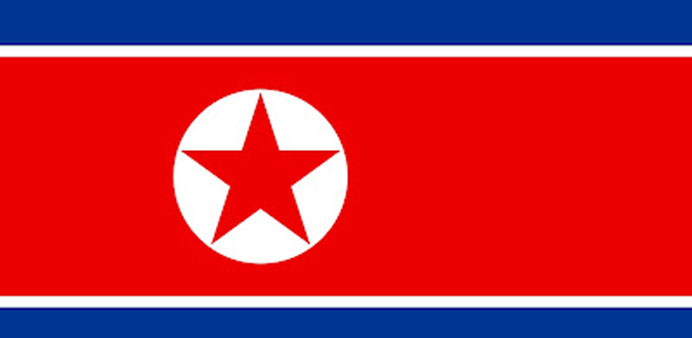AFP/Seoul
Fresh satellite images confirm that North Korea has halted construction at a facility to launch a new generation of long-range rockets, a US research institute said yesterday.
The building of a new launch pad, missile assembly building and launch control centre at the Tonghae Satellite Launching Ground slowed and then stopped around September 2012.
“While it was expected that construction would continue this spring, new imagery indicates that work had not resumed as of late May 2013, almost eight months later,” the US-Korea Institute at Johns Hopkins University posted on its 38 North web site.
The new facilities were intended to handle rockets larger than the North’s Unha-3 space launch vehicle (SLV) which successfully placed a satellite in orbit in December last year.
Although tagged by Pyongyang as a purely scientific mission, that launch was seen by the international community as a disguised ballistic missile test and was punished by additional UN sanctions.
The 38 North website said it was unclear why work at the Tonghae site had been halted.
Initial speculation that it was due to construction teams being sent elsewhere to repair widespread typhoon damage now seems unlikely given the eight-month time lapse, it added.
“If work resumes, completion of the new launch facilities ... would appear to be at least a year behind the estimate of their original (2016) schedule” it said.
The website speculated that Pyongyang may have decided that one launch pad capable of handling larger rockets than the Unha - located at the more modern Sohae facility - was sufficient to press ahead.
“An alternative explanation is that the North may have decided to slow or even end its effort to build larger rockets,” it said. Such a step would mark a major policy change.
Despite international criticism and UN sanctions, North Korea has repeatedly made it clear that it intends to pursue a missile programme which it sees as a key component of an effective nuclear deterrent.
During the recent surge in military tensions on the Korean peninsula that followed the December rocket launch and the North’s nuclear test in February, Pyongyang warned it had the ability to deliver nuclear warheads as far as the continental US.
Most experts say such claims are exaggerated, but Washington announced in March that it was deploying new missile interceptor batteries in Alaska in order to “stay ahead” of the nuclear threat from North Korea.

